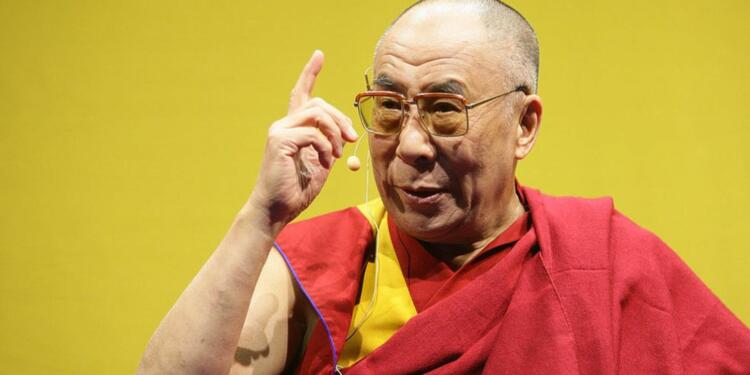In the intricate dance of geopolitics, every move is strategic, and every decision reverberates across borders. One such instance is China’s persistent opposition to the Dalai Lama’s visit to Sri Lanka, a country with a significant Buddhist population eagerly awaiting his presence. Despite the fervent desire of Sri Lankan Buddhists to welcome the spiritual leader, China’s political maneuvering has thwarted these aspirations time and again. Understanding the motivations behind China’s opposition sheds light on broader geopolitical dynamics and the complex interplay of power in the region.
The Dalai Lama, revered as the 14th reincarnation of the Buddha, Avalokiteshvara, embodies spiritual leadership and resistance to Chinese dominance since the takeover of Tibet in 1950. His exile to India following the failed Tibetan uprising marked the beginning of a lifelong struggle for Tibetan autonomy and cultural preservation. Over the decades, China has viewed the Dalai Lama as a symbol of dissent and separatism, seeking to undermine his influence both domestically and internationally.
China’s opposition to the Dalai Lama’s visit to Sri Lanka is not merely a matter of religious or cultural sensitivity but a calculated move on the geopolitical chessboard. By pressuring the Sri Lankan government to prevent the visit, China aims to consolidate its influence in the region and counteract perceived threats to its authority. Sri Lanka, embroiled in debt restructuring negotiations with China, finds itself in a delicate position where economic considerations intersect with political pressures.
Strategic Alliances
China’s strategic calculus extends beyond Sri Lanka’s borders, envisioning a regional alliance of Buddhist communities aligned with its interests. By fostering ties with Gandharan Buddhists in Pakistan, China seeks to undermine traditional alliances with Indian-influenced Buddhist sects and isolate the Dalai Lama. This strategic maneuvering reflects China’s broader efforts to shape regional dynamics in its favor and suppress voices of dissent, both within its borders and beyond.
Also Read: China’s Regressive Stance on Tesla EV in India: Fear or Strategic Maneuvering?
Tibetan Resistance
The Tibetan resistance against Chinese rule and the support it garners internationally is a testament to the enduring legacy of the Dalai Lama and the broader Tibetan struggle for autonomy and human rights. Despite China’s efforts to portray the Dalai Lama as a separatist and discredit his leadership, he continues to enjoy widespread admiration and support globally. This support stems from several factors.
The Dalai Lama’s message of compassion, non-violence, and human rights resonates deeply with people around the world. His moral authority transcends religious and cultural boundaries, making him a revered figure not just among Buddhists but among people of various faiths and beliefs.
Lama’s consistent advocacy for genuine autonomy for Tibet within the framework of the Chinese constitution, rather than outright independence, has garnered sympathy and support from governments and international organizations. His approach emphasizes dialogue and peaceful resolution of conflicts, which aligns with prevailing international norms.
Tibetan struggle
The Tibetan struggle is not just about political autonomy but also about preserving Tibetan culture, language, and identity in the face of Chinese assimilation policies. The Dalai Lama’s advocacy for human rights and cultural preservation strikes a chord with human rights organizations and activists worldwide, who see Tibet as a symbol of resistance against cultural oppression.
Despite China’s efforts to isolate him, the Dalai Lama maintains a significant international presence. His engagements with world leaders, participation in global forums, and extensive travels have helped keep the Tibetan cause on the international agenda. Leaders from various countries, including the United States, European nations, and India, have openly met with him, despite Chinese protests.
Beyond official diplomatic channels, grassroots movements, civil society organizations, and ordinary individuals across the world express solidarity with the Tibetan cause. Protests, campaigns, cultural exchanges, and support networks continue to thrive, amplifying the voice of Tibetan activists and raising awareness about their plight.
In Conclusion, the opposition to the Dalai Lama’s visit to Sri Lanka serves as a microcosm of broader geopolitical tensions and power struggles in the region. China’s calculated maneuvers, driven by a mix of political, economic, and strategic interests, underscore the complexity of contemporary geopolitics. As Sri Lanka navigates the delicate balance between economic imperatives and political pressures, the enduring legacy of the Dalai Lama’s spiritual leadership continues to inspire hope and resistance against oppression, both in Tibet and beyond.
Also Read: From Rivalry to Resilience: Modi’s Plan to Unlock India-China Relations































